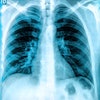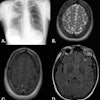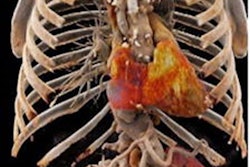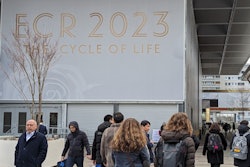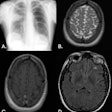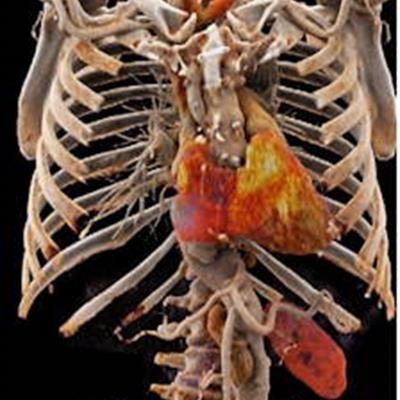
Photon-counting CT (PCCT) reduces the amount of contrast needed for coronary CT angiography (CCTA) by 25% -- without impacting image quality, according to a study published on 26 January in Radiology: Cardiothoracic Imaging.
The results further highlight PCCT's benefits, wrote a team led by researchers from the University of Zurich.
"We showed that the improved image quality of CCTA with photon-counting detector CT systems can be used to reduce the amount of administered contrast media to the patients, without reducing the diagnostic yield of the examination," coauthor Dr. Hatem Alkadhi said in a statement released by the RSNA. "Image quality remained at the same level as that of previous CT angiography examinations in the same patients using a conventional CT, despite the fact that we reduced the contrast media volume."
CCTA is used with contrast to assess the aorta that passes through the chest and abdomen, and which is prone to aneurysms, the group noted. The iodinated contrast agent used with the exam is considered safe, but there are risks, especially among patients with kidney disease.
"Many patients undergoing [CCTA] of the aorta are elderly, and some may suffer from a certain degree of nephropathy," said senior author Dr. Hatem Alkadhi of the University Hospital Zurich in Switzerland in a statement. "Thus, they might be at risk for a further reduction of their kidney function due to contrast media administration."
What's more, iodine breakdown can have harmful effects on the planet and contrast agents are subject to supply chain disruptions, reducing the use and amount of CT contrast becomes more pressing, the group noted.
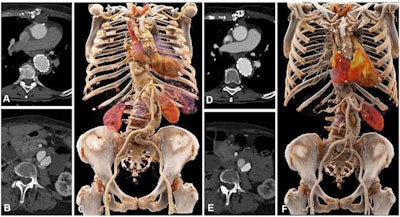 Comparison of image quality between EID CT with standard contrast media protocol and PCD CT with low-volume contrast media protocol using a matched radiation dose. Transverse and three-dimensional cinematic rendered images from thoracoabdominal CTA in a 71-year-old woman in group 2 are shown. (A-C) Images from third-generation EID CT with automated tube voltage selection of 90 kVp. BMI, effective diameter, CTDIvol, and SSDE were 23.7 kg/m2, 278 mm, 3.98 mGy, and 5.25 mGy, respectively; 70 mL of contrast media was used. (D-F) Images from PCD CT with reduced contrast media volume of 52.5 mL and VMI at 50 keV. Time interval between scans was 6 months. Mean BMI, effective diameter, CTDIvol, and SSDE at the time of the second scan were 24.2 kg/m2, 282 mm, 3.99 mGy, and 5.27 mGy, respectively. Mean contrast-to-noise ratio for EID CT and PCD CT were 17.2 and 17.9, respectively. BMI = body mass index, CTA = CT angiography, CTDIvol = volumetric CT dose index, EID = energy-integrating detector, PCD = photon-counting detector, SSDE = size-specific dose estimate, VMI = virtual monoenergetic images. Images and caption courtesy of the Radiological Society of North America.
Comparison of image quality between EID CT with standard contrast media protocol and PCD CT with low-volume contrast media protocol using a matched radiation dose. Transverse and three-dimensional cinematic rendered images from thoracoabdominal CTA in a 71-year-old woman in group 2 are shown. (A-C) Images from third-generation EID CT with automated tube voltage selection of 90 kVp. BMI, effective diameter, CTDIvol, and SSDE were 23.7 kg/m2, 278 mm, 3.98 mGy, and 5.25 mGy, respectively; 70 mL of contrast media was used. (D-F) Images from PCD CT with reduced contrast media volume of 52.5 mL and VMI at 50 keV. Time interval between scans was 6 months. Mean BMI, effective diameter, CTDIvol, and SSDE at the time of the second scan were 24.2 kg/m2, 282 mm, 3.99 mGy, and 5.27 mGy, respectively. Mean contrast-to-noise ratio for EID CT and PCD CT were 17.2 and 17.9, respectively. BMI = body mass index, CTA = CT angiography, CTDIvol = volumetric CT dose index, EID = energy-integrating detector, PCD = photon-counting detector, SSDE = size-specific dose estimate, VMI = virtual monoenergetic images. Images and caption courtesy of the Radiological Society of North America.First author Dr. Kai Higashigaito, also of the University Hospital Zurich, and colleagues conducted a study that explored use of a low-volume contrast media protocol with PCCT for CCTA of the aorta in the chest and abdomen. The research included 100 people, all of whom had undergone CCTA with conventional CT and all of whom underwent CCTA with PCCT. The study participants were divided into two groups: 40 people who underwent imaging between April and May 2021, and 60 who underwent imaging between June and September 2021.
Among the first group, the team found that PCCT conducted at 50 keV offered "the best trade-off between objective and subjective image quality," reaching a 25% higher contrast-to-noise ratio compared with conventional CT. In the second group, contrast media volume was reduced by 25%.
Additionally, the study's two readers rated the quality of the PCCT images higher than conventional CT imaging at an equal radiation dose, the group noted.
"CCTA of the aorta with [PCCT] was associated with higher contrast-to-noise ratio, which ... translated into a low-volume contrast media protocol demonstrating noninferior image quality compared with [conventional] CT at the same radiation dose," the authors concluded.

